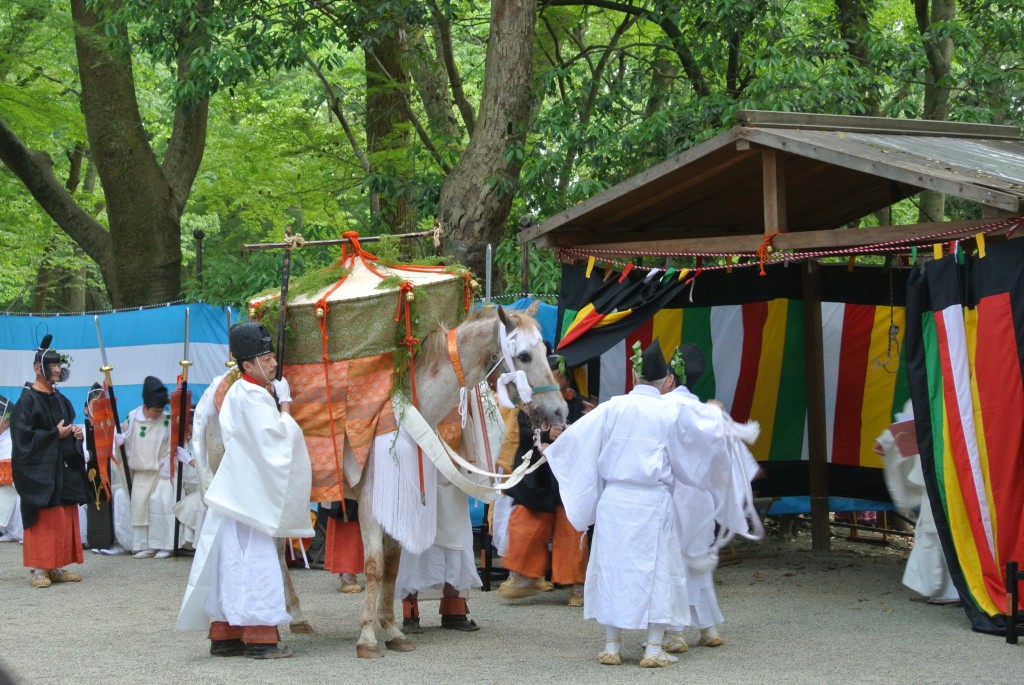
Arrival of the horse-borne aramitama (rough spirit of the kami)
In the morning the festival procession had left Shimogamo Shrine for Mikage Shrine at Yase, where participants collected the aramitama of the kami (and had lunch). In the afternoon the procession returned to Shimogamo, where the kami was welcomed with offerings and entertainment, before being formally installed in the honden.
The proceedings took place in Tadasu no mori, Shimogamo’s primeval wood that forms an important part of its World Heritage designation. Commentary by a master of ceremonies stressed the festival’s celebration of new growth and the importance of the sakaki and katsura (Judas tree) branches as symbols of the emergent lifeforce. The sacred branch would subsequently become a yorishiro (conductor) for a new aramitama to be installed at Mikage Shrine. Renewal was thus very much the theme of the festival.
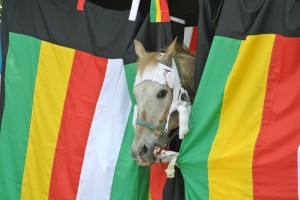
White horse, bearing a kami, watches the proceedings with interest
As in the morning, the journey from Mikage Jinja was made by vehicle, and once everyone had arrived, the kami was placed on the back of a white horse. Carefully hidden from view under a protective covering, the kami was then led up the Shimogamo sando (approach way) to a canvas awning into which the horse was led. Rather surreally, the horse’s head protruded from this to survey the proceedings, as if acting as the eyes of the kami.
Under the watchful gaze of the horse, offerings were made, gagaku musicians lined up to play, and there was a performance of azuma asobi (an ancient dance originating in eastern Japan). The idea was to soothe the kami on its move to its new quarters (though to a modern ear the chanting seemed anything but soothing, sounding at times much like out-of-tune karaoke!).
Following the performance, the procession with the horse-borne kami at its heart continued on to the shrine, where it passed through the outer courtyard. As it moved into the inner compound, the gates were swung shut. A few minutes later the white horse emerged, without the kami covering. Meanwhile, on the inside of the gates the priestly cohort conducted rituals to install the aramitama in its new home.
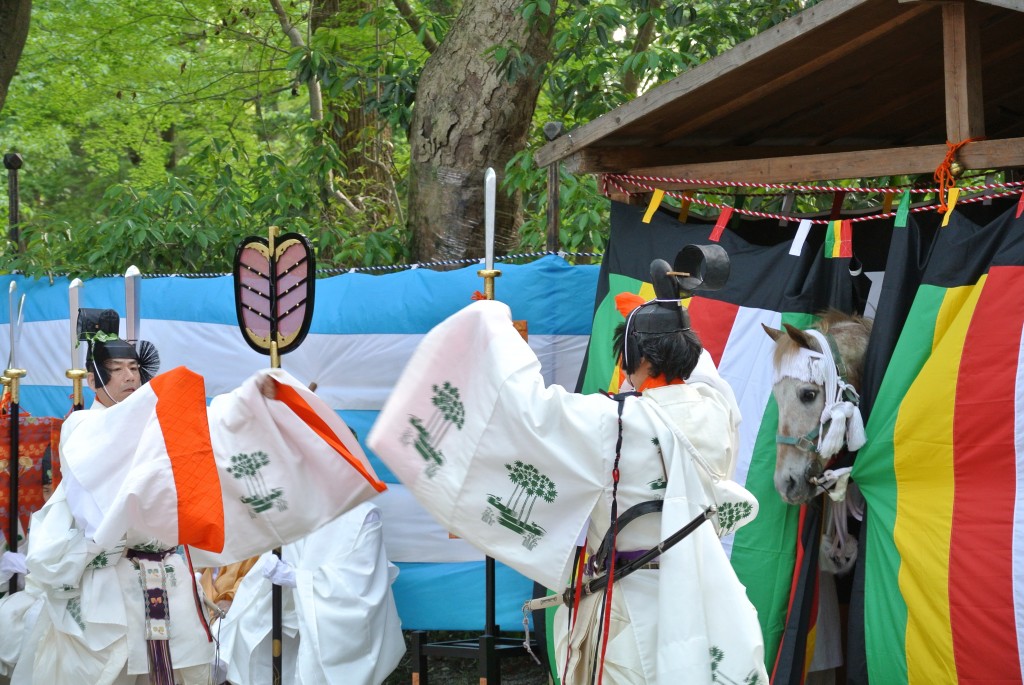
Azuma dance offering to the kami
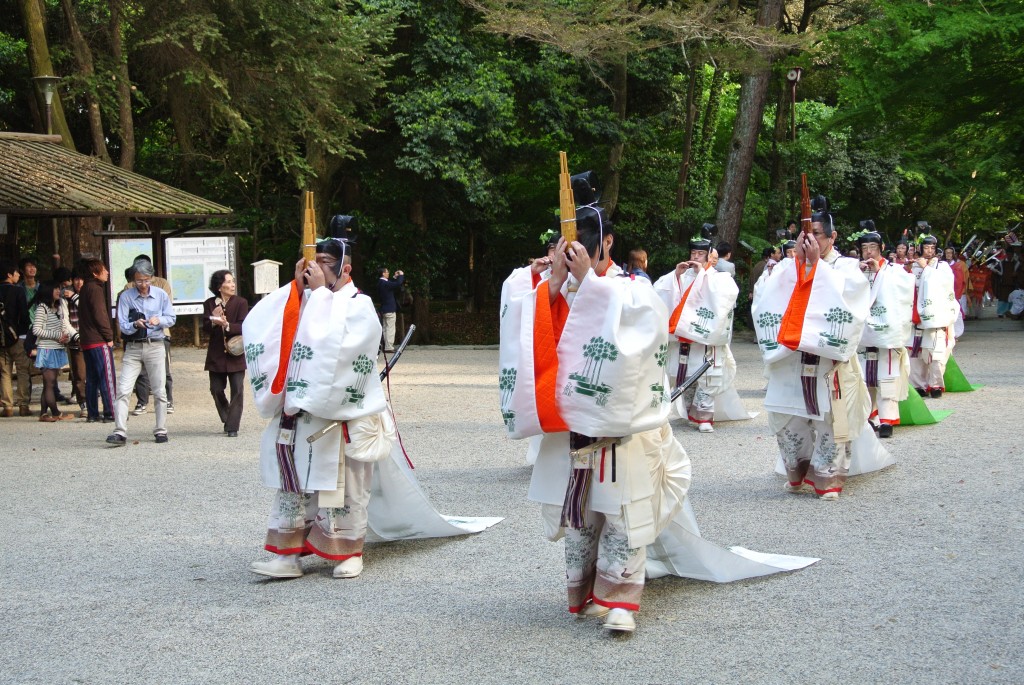
Gagaku musicians with the plaintive 'sho' in the lead
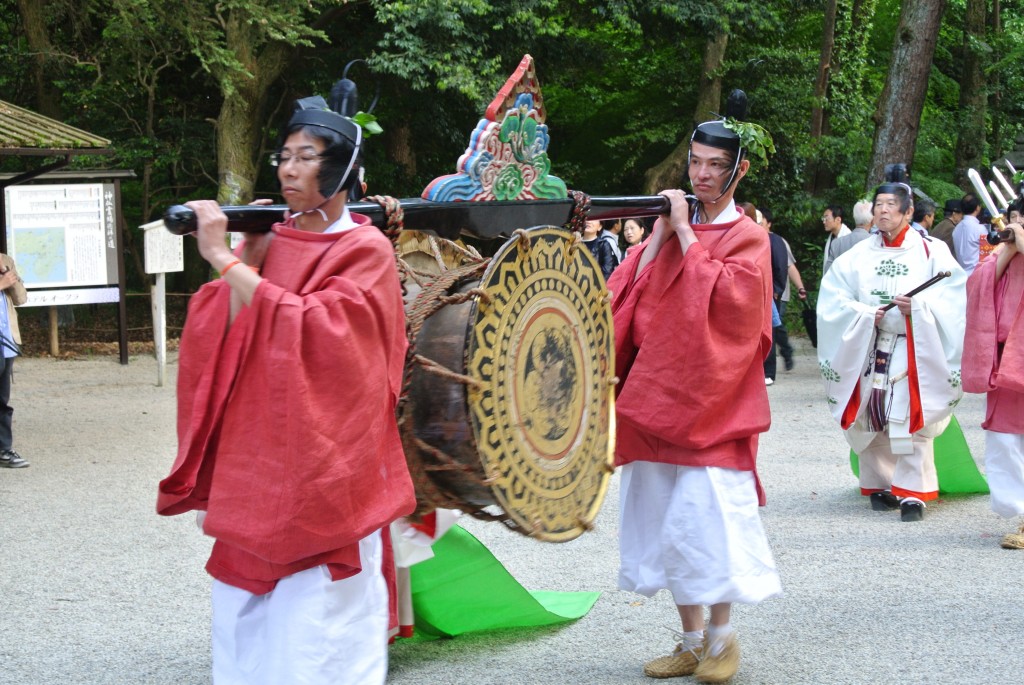
The ceremonial drum takes a leading part
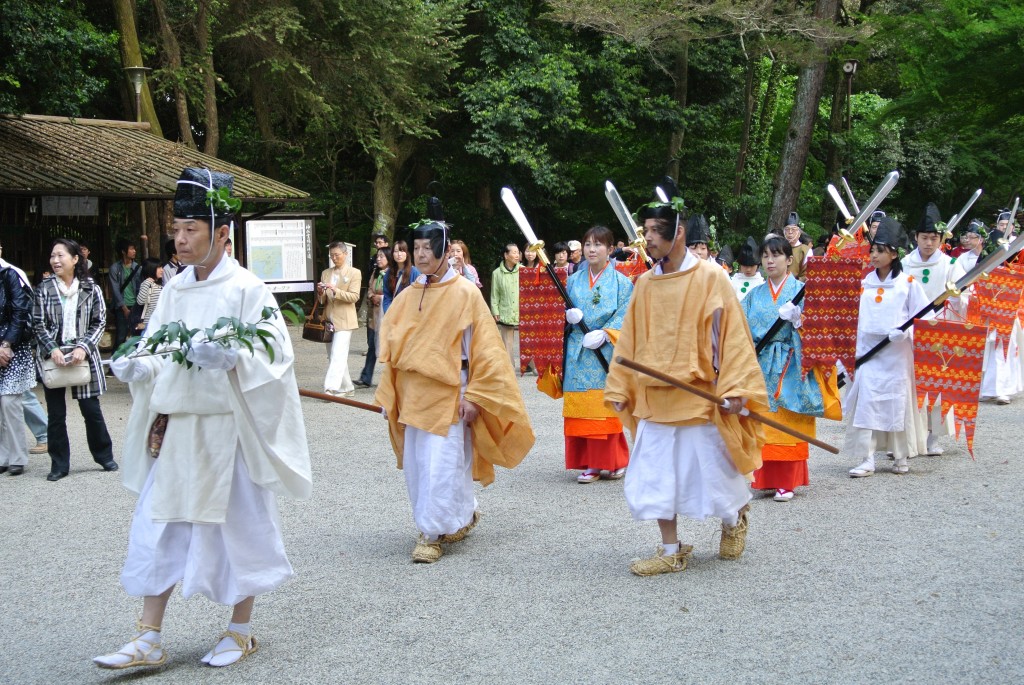
Procession of the halberbs, preceded by a sakaki branch
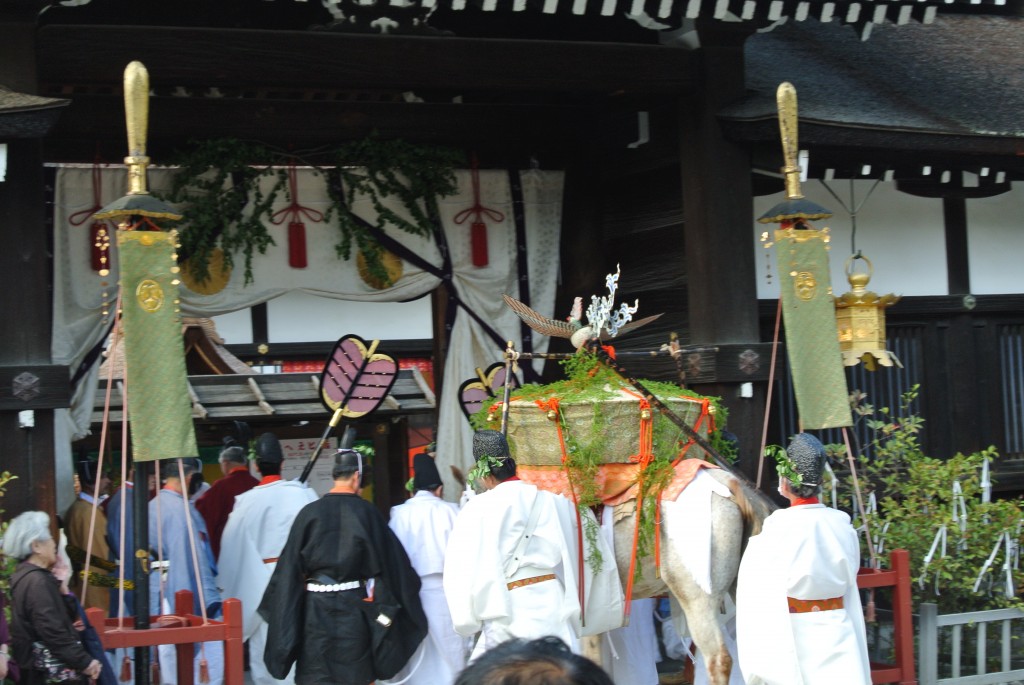
Entering the inner compound of Shimogamo, following which the gates were shut on the outside world

Leave a Reply